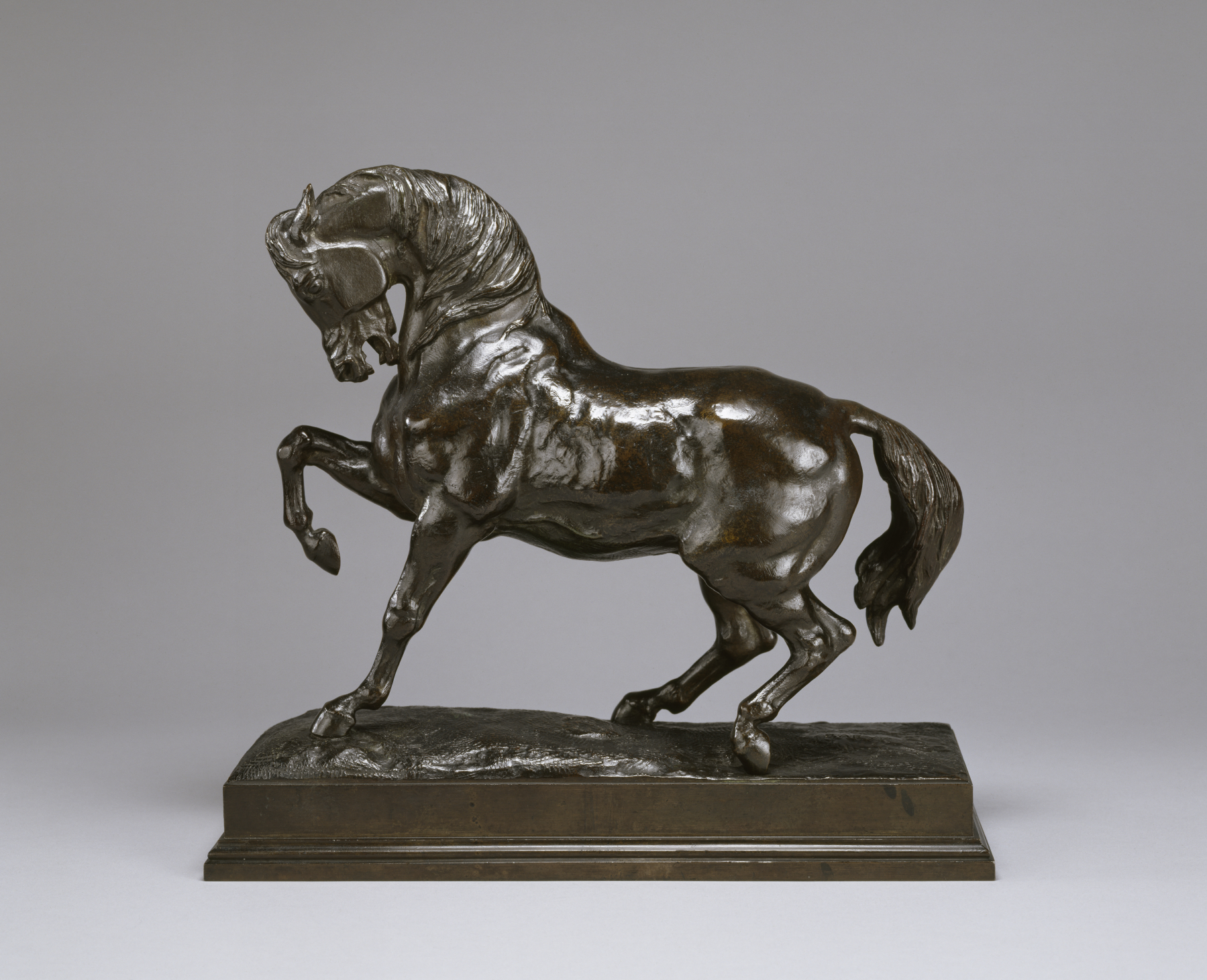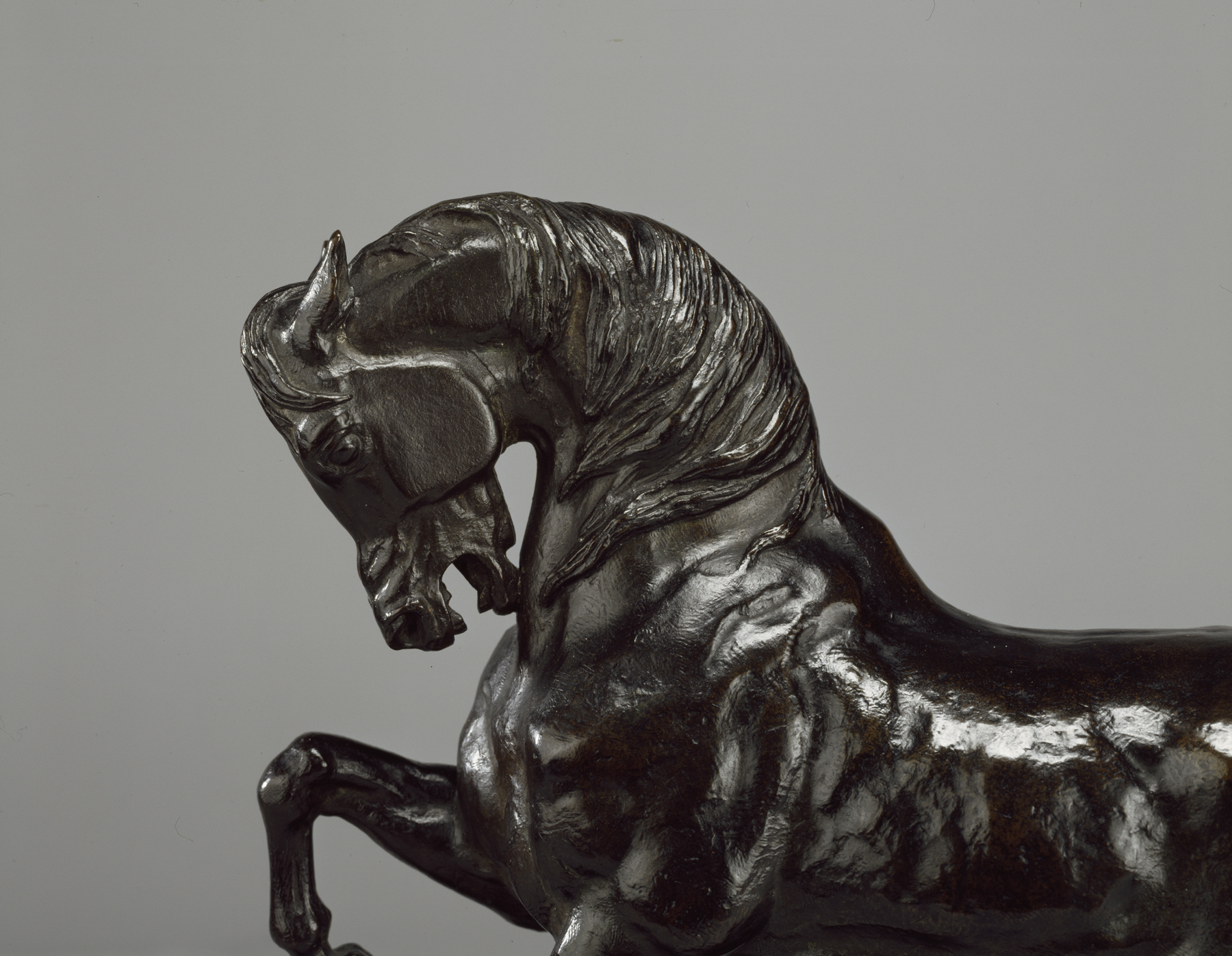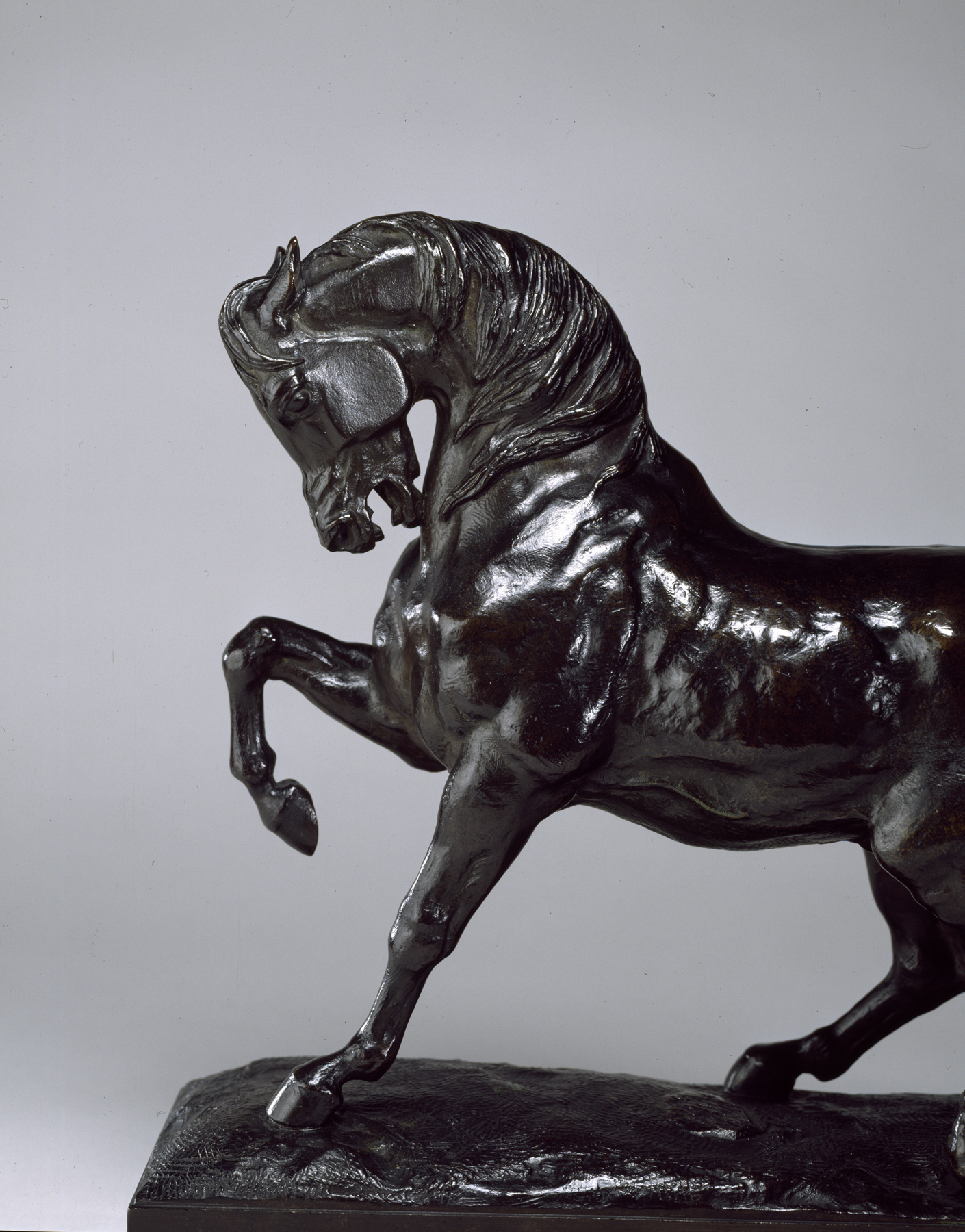Turkish Horse, No. 2
(18th and 19th Centuries )
In a catalogue issued by the firm Besse et Cie in 1844, this stately horse with its long, flowing mane is described as follows:
This horse is fully at liberty, freely inhaling the air through its nostrils; proudly raising its head as though neither death nor enslavement could ever be its fate; this horse soothes our eye and spirit, chasing off any disheartening thought; the only feeling that one can experience upon seeing it is a deep admiration both for one of nature's most beautiful and most noble creatures and for the talent of its delineator.
Inscription
Provenance
Provenance (from the French provenir, 'to come from/forth') is the chronology of the ownership, custody, or location of a historical object. Learn more about provenance at the Walters.
William T. Walters, Baltimore, prior to 1889 [mode of acquisition unknown]; Henry Walters, Baltimore, 1894, by inheritance; Walters Art Museum, 1931, by bequest.
Exhibitions
| 2007-2008 | Untamed: The Art of Antoine-Louis Barye. The Walters Art Museum, Baltimore; Philbrook Museum of Art, Tulsa; The Henry Morrison Flagler Museum, Palm Beach. |
| 1889-1890 | The Works of Antoine-Louis Barye. American Art Gallery (New York), New York. |
Geographies
France, Paris (Place of Origin)
Measurements
11 1/2 x 12 3/4 x 4 7/8 in. (29.2 x 32.4 x 12.4 cm)
Credit Line
Acquired by William T. Walters, before 1889
Location in Museum
Not on view
Accession Number
In libraries, galleries, museums, and archives, an accession number is a unique identifier assigned to each object in the collection.
In libraries, galleries, museums, and archives, an accession number is a unique identifier assigned to each object in the collection.
27.67






